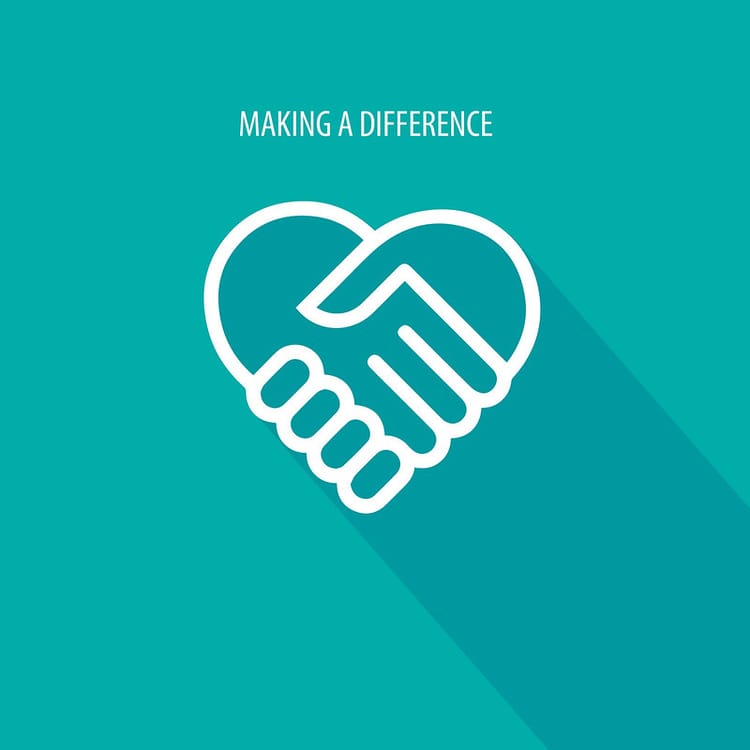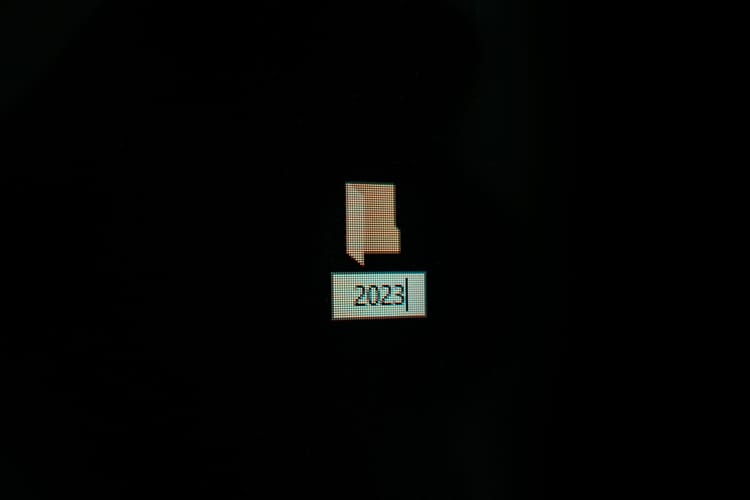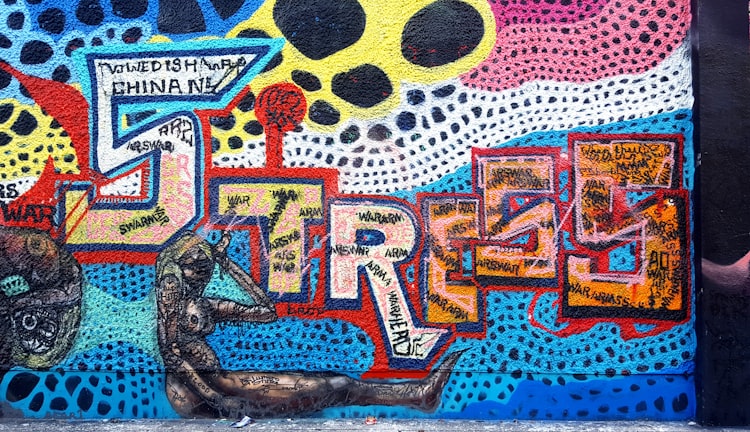If You’re Missing Any of These 3 Essentials to Maximize Your Productivity, You’ll Burn Out and Fail as a Creator

The 3 essential elements of highly efficient (and humane) productivity.
What is the purpose of talking about productivity unless we put the word, ‘efficient’ in front of it?
Productivity without a qualifier is an unclear and unhelpful idea. Who gets to decide what's productive and how it's measured? How do you add your humanity into the mix instead of only quantifying income as the sole measure of success?
Success for any creator is the ability to accomplish what you want in the least amount of time, and in the easiest, most efficient, humane way possible to enjoy the benefits of what you've created.
Regardless of how you choose to measure productivity, there are 3 essential elements that directly contribute to the quality of your creativity and production.
The 3 Es are Energy, Emotions, and Enthusiasm.
When you learn how to maximize each of the 3 E’s, the combined result optimizes your creativity and production, contributing to your happiness, peace of mind, and freedom as a successful creator.
The 1st E: Your Energy
You have limited physical, intellectual, and emotional energy each day — and it’s never the same.
Energy is something you can manage, whereas time is an intellectual construct and not something you can control. When you plan to complete tasks in your day based on the kind of energy and focus required, you increase the efficiency of your production, goal achievement, and income potential. Knowing how and when you allocate your energy is paramount to your efficiency.
Knowing how to manage your energy gives you the freedom to complete more tasks in your day, manage complex tasks and thinking, or enjoy a higher amount of free and leisure time.
Effective energy management depends on the following variables (in no particular order):
- Time of Day
- Task Duration & Time Chunking
- Working Environment
- Type of Work
- Motivation
- Rest & Recovery
- State of Mind
- People
Energy Variable # 1: Time of Day
Do you know when you are most efficient and effective doing the different types of work associated with your business?
Full disclosure: I’m not fond of the idea that the best time of day to do your best work is in the morning. At the risk of sounding like I’m contradicting myself, mornings are my optimal time for creativity, which is my most important work. However, I have worked with clients who blossom into creativity and flow states very late in the evening. One client is an early riser, while the other often doesn’t get up until noon. In other words, know yourself and don’t allow anyone else to convince you otherwise.
Efficiency is like water flowing around a massive boulder in the middle of the stream.
Efficiency is not about a lack of resistance or challenges. Rather, it’s about the ease of how you get around the problem. The lesson for this variable is to know yourself, and thus the times of day when you function best — when you are most efficient and effective doing your different types of work.
For example, ask yourself,
- Am I most creative in the mornings or later in the evening?
- Do I prefer working with clients in the morning or the afternoon?
Whatever your answer, it is right for you.
If you want to be highly efficient, review the types of work outlined in Energy Variable # 4 below. Use a notepad to keep track of your energy along with the type of work you are doing for a week. You will then have data which you can use to create a test schedule for the following week.
Energy Variable # 2: Task Duration & Time Chunking
Different types of work require different amounts of time.
Here are some guidelines to help you determine what works best for you. I’ve found that long blocks of focused work — time chunks of 3-4 hours — are easier for me to sustain in the morning before lunch. In the afternoon, I prefer 30, 60, and 90-minutes blocks of time, depending on the task. What works best for you?
Generally speaking, getting into flow state for any kind of creative work is optimized when you have a longer block of time to work within.
There’s no right or wrong. It’s up to you to find the right amount of time that best fits the types of work you do. Similar to Energy Variable # 1, use a notepad or create a tracking sheet to log how you spend your time in 15-minute increments throughout your day. Make note of the task you are doing and your energy level at the time. Consider noting your level of focus, clarity of mind, and emotional state.
Try this review for a week and then search for patterns in the data to determine what steps and strategies to put in place that will improve your efficiency.
Energy Variable # 3: Working Environment
If you feel dread, annoyance, or sadness every time you walk into your home office or place of work, how effective will you be?
The truth is that we are consciously and unconsciously influenced by our external environments. If your emotional state is negatively affected by your workplace, your energy will be diminished. So, what can you do to optimize your working environment such that you feel energized, enthusiastic, and productive?
Here’s how to conduct a simple environmental audit of your workspace.
(Note that you will likely have more control over your home office than if you work for a company).
- Take a look around your office and collect anything you don’t like that doesn’t make you feel good. If it is unclear to you why it’s there, add it to this pile. This includes furniture, books, anything on flat surfaces, art on the walls, the colour on the walls, lighting, and so on.
- For anything that makes you feel happy, leave it.
- If you feel neutral about something, write that down on a sheet of paper. In a couple of days, go back over your list of neutral items one more time. Remove them (or plan to replace them) if they don’t make you feel an empowering emotion.
What about your technology workspace environments?
Our computers, phones, and tablets are another kind of work environment. You can apply the above 3-step audit to your software, files, website bookmarks, and social media accounts. If you feel any kind of unpleasant emotion or feeling when you review any one of those items, can you delete it?
Energy Variable # 4: Type of Work
In my article, “4 Efficient Productivity Frameworks to Manage Your Energy and Focus,” I outline the 5 types of mind-management work:
- Creative Generation
- Creative Production
- Reading for Research and Inspiration
- Client-Facing Work
- Administration
Each type of work supports creative output and is based on your available energy, willpower, discipline, and ability to focus on a single task with minimal distraction.
When you know when you’re most efficient and effective doing different types of work (see Energy Variable # 1) you can then effectively schedule your workdays over the week.
Energy Variable # 5: Motivation
The greater your motivation and purpose for doing your work, the more efficient your output.
Motivation comes from within. No one else can make you do anything that you don’t feel like doing. To understand what emotions drive you and create motivation, see The 2nd and 3rd Es: Emotions and Enthusiasm below.
Energy Variable # 6: Rest & Recovery
This is an aspect of your overall health and wellness that applies to everyone.
Regular quality sleep improves the quality of your life. Without it, your energy, cognitive ability, emotional management, and health decline rapidly. Eating healthfully, regular exercise, personal enjoyment, and spending time with people you care about are aspects of vitality that influence well-being and recovery.
Neglect rest and recovery at your peril.
Energy Variable # 7: State of Mind
Mental and psychological preparation affects the quality and quantity of your energy.
Habits like journaling, morning routines, exercise, and so on have positive effects on your state of mind and well-being. If you’re dealing with a stressful situation or anxiety, you’re not going to be in your logical and creative mind. These emotional states have a high-energy cost that reduces mental clarity and focus, but also overall physical energy.
What’s your current state of mind?
Energy Variable # 8: People
Who is draining your energy and confidence, and who is adding to the quality of your life?
Managing your energy in relation to people may require spending less time with someone or less time in places where certain people hang out who diminish your happiness and energy.
Years ago, when I was still a personal trainer and nutrition coach, I worked with a client who wanted to lose 60 pounds (ca. 27 kg). His friends were all heavy drinkers who loved to eat. He would go out with them almost every Friday and Saturday night. They encouraged each other to eat and drink to excess. He had to slowly wean himself away from this group because hanging out with them no longer supported his goals of body-fat loss and the life he wanted for himself.
As discussed in Energy Variable # 6, the quality of your (mental) health and well-being contribute to your available energy.
If the problematic person lives online, you can stop reading, commenting, or following them. Yes, it’s that simple.
You can’t manage time, but you can manage and optimize the variables that cultivate the amount of energy available to you each day.
The 2nd E: Your Emotions
How easy is it to do something that you absolutely can't stand?
That's a rhetorical question, but it drives the point home. When you are aligned with your core emotional drives, desires, and goals, you’ll have the capacity to work with minimal friction, and the mindset to deal with challenges when things don't go as planned. When you can respond instead of reacting to life's events, you'll have a greater impact on others, simply because you’ll be happier and have greater peace of mind.
Knowing your triggers and understanding how to pull yourself back from reactions to maintain emotional control is the core skill of self-mastery.
Emotions move you towards what you want or away from what you don’t.
The meaning of the word, emotion, comes from the Latin verb, emovere, which means ‘move out, remove, agitate.’ The root of the word, movere, means, ‘to move.’ We experience most emotions on a physical level. From a neurobiological standpoint, emotions are action programs — literally the software that keeps us alive and safe — that include both drives and feelings.
When you read the examples of the various drives and emotions in the bullet points below, ask yourself how you have felt and moved when you experienced each one:
- A drive is associated with instinctual physiological needs like, “hunger, thirst, libido, exploration and play, care of progeny and attachment to mates.” (1)
- Emotions are action programs triggered by external factors (which can happen in real time or be experienced again from memory). These include “disgust, fear, anger, sadness, joy, shame, contempt, pride, compassion, and admiration.”
- Our feelings are mental experiences or perceptions associated with our physical states.
What drives you, moves you.
For example, if you’re hungry (a drive) you are moved (motivated) to find something to eat.
If you are deeply passionate about a certain kind of work (writing a novel, volunteering for an LGBTQ refugee organization, reading about history), you will be easily moved and self-motivated to do that work. Thus, the greater your emotional motivation for working on a task or project, the easier it will be to cultivate the necessary energy.
Passion is strongly associated with your purpose.
Passion is an intense drive — possibly associated with exploration — which is having excitement for something.
If you’re not passionate about what you’re doing, it’s going to be difficult to sustain energy for that task. The more you associate the purpose of your work with your passion, the greater your motivation, energy, and enthusiasm.
As you can see, the 3 Es all work to support and cultivate each other.
The 3rd E: Your Enthusiasm
Enthusiasm is an intense, eager enjoyment and interest in whatever you are focused on doing.
Within efficient productivity, enthusiasm comes from doing work at the time of day based on your optimal energy and emotional state. Enthusiasm is associated with the motivation and passion for what you’re doing. When you feel enthusiastic, whatever you're doing feels easy.
The easier and the more enthusiastic you are about your work, the more likely you can enter a flow state — the elixir of creators.
Are you feeding or depleting your energy?
When you can work from a state of enthusiasm, it's like having energy-efficient LED lightbulbs in your home. They burn brighter and consume less energy than incandescent bulbs. This is why enthusiasm supports and cultivates efficient productivity.
The key is to understand how to best apply your enthusiasm.
Here is my personal framework.
I don't have research to support this claim other than anecdotal evidence of my productivity and my clients. If you prioritize work that's most important and fulfilling to you in the earliest part of your day, not only are you maximizing enthusiasm, but you also increase focus and energy. For the reasons why this works, see, “4 Efficient Productivity Frameworks to Manage Your Energy and Focus.”
The earlier you get to your most significant work, the greater your willpower — the cognitive energy required to make decisions — to remain on task and to efficiently deal with distractions.
If you experience enthusiasm in the first part of your day, you’ll enjoy the contentment associated with accomplishment.
A sense of accomplishment leads to empowering feelings like pride and satisfaction.
The more positive and empowered your emotional state (also known as your hedonic tone) the easier it is to focus on the next task — even those you might not be as excited about. If you spend your morning enthusiastically working on something purposeful and without struggle, you will have the energy and willpower to be efficiently productive in the second part of your day.
Regular enthusiasm supports and cultivates living life to the fullest, doing what's meaningful and fulfilling without compromise, and being authentically who you are.
(1) Damasio, A., Carvalho, G. The nature of feelings: evolutionary and neurobiological origins. Nat Rev Neurosci 14, 143–152 (2013).





Member discussion